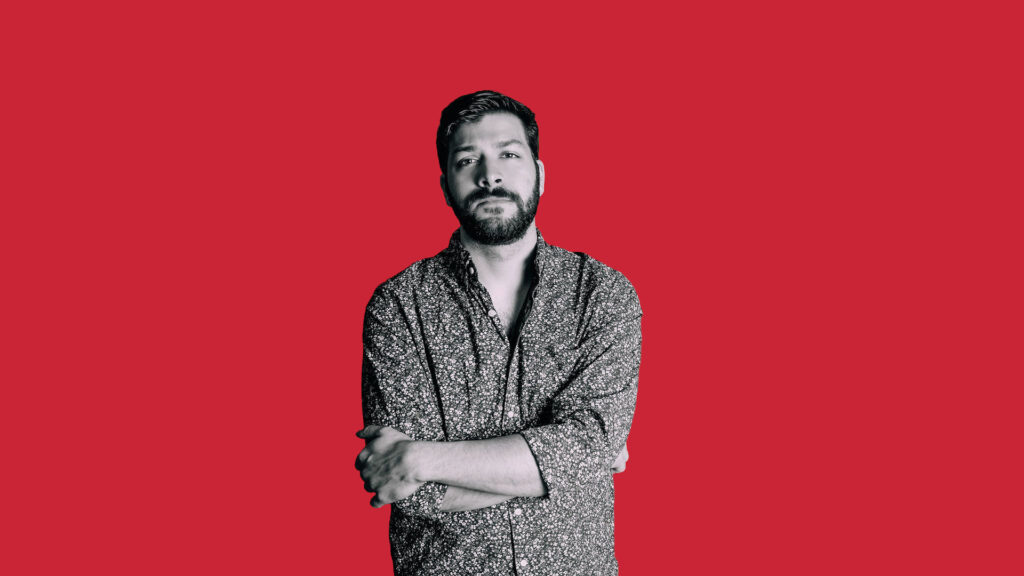In the shimmering dawn of the digital era, a curious transformation has overtaken the landscape of the musical realm. A paradigm shift, a sonorous revolution, or perhaps a soulful revelation – it is the rise of solitude that now commands the artistic spotlight. As the luminous arc of a creative life bends ever more towards self-reliance, music artists, much like their literary peers, have discovered a sanctuary within their own solitude. And so as we navigate through the intricate symphonies of self-publishing, the treacherous terrain of forming mostly glib connections through social media, and the rugged and all-too-enervating DIY climate of ‘lone-wolf’-style promotion, the essence of this seemingly widespread isolation takes on a whole new life of its own, casting long, ethereal shadows across this multifaceted landscape of myriad virtual networks.
In the voluminous realm of isolationist soundscaping, a wave of artists has emerged as torchbearers, masterfully crafting audio landscapes that mirror this very modern and unique sense of solitude and introspection. One such luminary of the craft is Biosphere, the seasoned and enigmatic Norwegian sound sculptor, conjuring immersive sonic realms that evoke the desolation of Arctic tundras. His compositions, notably “Substrata,” unfurl as sonic tapestries where glacial synths and spectral echoes resonate, serving as prototypal metaphors for the isolation that engulfs postmodern artists. Biosphere’s work becomes a meditation on the seclusion and the vast expanse of the artistic mind, embracing isolation as an essential cocoon for creative metamorphosis.
In the intricate tapestries of Glacient, the isolationist experience is rendered as an intricate and hypnotic dance. The artist, shrouded in anonymity, invites the listener into a musical labyrinth in which abstract, minimal passages intermingle with subtle rhythmic pulses, weaving a narrative that mirrors the digital age’s isolation and detachment. Glacient’s compositions are an allegory of artists navigating a hyperconnected world, seeking solace in their own audio constructs, indeed making isolation a virtue rather than a burden.
Simon Scott, the former Slowdive drummer turned drone alchemist, effortlessly beckons the listener to a realm of introspection and profound reflection, arguably his roots in the British Shoegazing scene providing him with extra panache. His 2015 masterwork, “Insomni,” tenderly encapsulates the seeming external disconnect of today’s music creators. The delicate guitar loops and drifting soundscapes mirror the introspective journeys of artists who now find themselves both blessed and burdened by the pervading solitude of the digital age. Scott’s sonic excursions resonate with the notion that isolation, when fully embraced, can be the fertile soil for musical metamorphosis, conceiving extraordinary landscapes in the realm of autodidactic soundscaping.
As regards the need for self-promotion, it could be said that the majority of independent artists today find themselves embarking on a lonesome odyssey through an abyss of existential musings, perhaps hitherto unknown. The power to share one’s craft directly with the world, however, liberated from the traditional gatekeepers, is a double-edged sword. While it empowers individual voices, this newfound creative freedom has the potential to catapult creators into a void in which they must grapple with their identity.
As independent artists, are we then assured by the curious notion that raw and innovative talent alone, that rare gem among the hash of fairy-tale dirge, shall speak for and reveal itself? Or are we finding ourselves increasingly distracted and very often dismayed by our ‘lacklustre’ exposure and pallid resonance, thus rendering the unwavering will to create transcendent, ineffable beauty almost secondary to the virtual rat race of internet popularity? Solitude thus becomes an enigmatic muse in itself, encouraging artists to explore the depths of their own creative waters. And therein lies the paradox: as artists continue to embrace the boundless potential of independent marketing and self-promotion, they find themselves inadvertently wading deeper into the waters of self-inflicted isolation, precariously exposing themselves to an unenviable existential vulnerability. And I, for one, champion this vulnerability.
Picture, if you will, the often romanticised image of the rugged and accolade-starved artist as a lone wanderer amidst a vast, uncharted wilderness of copious social seas. The seeming neglectful silence from the hundreds of thousands of potential listeners initially greeting his exuberance, at first a daunting abyss, becomes in itself a sonic tapestry upon which the artist’s most intimate thoughts, disconcertment, and aspirations are woven. In this cocoon of profound isolation, the modern visionary finds refuge from the cacophony of expectation and industry pressure, and in that silence, a symphony of unbridled self-expression emerges. It is in this very type of solitude that the artist becomes something else: a philosopher. This is to say, when a skilled craftsman morphs into a human being and not simply a human doing.
With the ubiquity of social media, the solitude that accompanies artistic creation finds an ironic juxtaposition. While it has never been easier to connect with audiences across the globe, the allure of virality and the ceaseless chase for approval plunge artists into an isolating vortex of superficiality. This clash between curated online personas and the authentic, solitary creative process unveils a surreal duality within the artist’s base faculty, echoing the fragmented and all-too-socially corrosive nature of modern life. Artists’ very existence is therefore fractured, juxtaposing their meticulously cultivated public image with the solitary creation of the art itself, which often occurs in the darkest crevices of the mind.
The DIY climate of artistic dissemination today, heralded as a utopian frontier of unbridled creativity, evokes a profound sense of not only existential isolation but also a foreboding sense of impermanence. Independent artists, entrepreneurs of their own creative enterprises, craft entire worlds from scratch. This necessitates not simply artistic prowess but also a formidably self-sufficient spirit. Yet, as they labour on isolated grounds, struggling to balance their art with the business acumen required for success, they tread the thin line between creative freedom and the spectre of artistic oblivion. Or at least this dual-edged axe weighs heavily on the mind.
By embracing this very modern form of solitude, our melody-makers can meticulously craft their opuses, unfettered by the clamour of external influences. The isolated artist, stripped of the entangling vines of co-dependence, is thus akin to an alchemist toiling away in an obscurely located laboratory, distilling pure essence into the synthetic elixir of musical (and lyrical) composition. The ‘aloneness’ thus becomes a solid sanctuary by its own virtue, a seminal chamber through which ideas germinate in the fertile soil of introspection. And indeed, what could be more authentic in relation to the organic creative process?
And what is the result of this newfound hermitage, this retreat into the wilderness of one’s very own internal network? It is an opulent tapestry of sound, a melodic feast, an auricular odyssey unburdened by compromise or convention. The hermit, free from the constraints of external expectations, becomes a sovereign lord over his own creative dominion, forging sonic landscapes and gut-churning schoolboy poetry untrammelled by consensus and soulless computer algorithms. In this lonesome yet spiritually rewarding endeavour, the artist becomes both explorer and cartographer, boarding the hitherto uncharted realms of his own creative capacity and once again revealing music as the ultimate expression of the unfiltered and raw human spirit. That is, the ultimate essence of an individual’s pure Being. They unearth the sacred gems of innovation and the precious pearls of authenticity, scattering them like treasures for an audience eager to partake in the riches of this newfound den of solitary introspection, a solitude fecundated with hope, desire, wonder, and unrivalled allure.
One is reminded of Friedrich Nietzsche’s philosophy on solitude, which is a resonating theme that not only encapsulates the intellectual journey of the solitary musician-turned-philosopher but also has a profound connection with the realm of creativity itself. Nietzsche, known for his works on existentialism and the will to power, believed that solitude was a crucible for the development of the Self. In the isolation of the individual, he saw an opportunity for profound self-exploration and the forging of one’s unique creative path. Nietzsche’s idea of the “Übermensch,” or “overman” in Anglo-Saxon terms, was intrinsically tied to this concept of solitude, emphasising the transcendence of societal norms and expectations and the liberation of one’s creative potential. As the great man so eloquently opined, “In solitude, the solitary individual attains to self-sustaining and self-relying freedom, to the most splendid independence.” It’s within these moments of isolation that artists and thinkers can delve into the depths of their minds, free from external influences, and give birth to innovative, revolutionary ideas. Nietzsche’s philosophy of solitude thus serves as a poignant backdrop to the fertile ground from which creativity blossoms, inspiring generations of artists and thinkers to embrace their own unique creative journeys and perhaps embarking on a profound imprint of the annals of history thereon.
“A man can be himself only so long as he is alone”, cited Nietzsche’s primary influence, Arthur Schopenhauer, and indeed the echoes of Schopenhauer’s philosophical musings on solitude resound today with an undeniable resonance. Schopenhauer, the 19th-century thinker renowned for his philosophy of pessimism, recognised solitude as the chief vessel for the creation of great art and philosophy. In his eyes, isolation was not a state of despair but a gateway to inner enlightenment. By detaching from the incessant noise of the external world, artists and philosophers alike could access the deepest recesses of their consciousness, thereby plumbing the depths of human existence and finding the purest essence of creative self-expression. Schopenhauer’s belief in the contemplative nature of solitude led him to emphasise the ascetic and solitary lifestyle, for it was in the profound stillness of isolation that the most timeless works of art and philosophical thought could be birthed. A testament to the power of introspection, Schopenhauer’s philosophy serves as a guiding star for those who seek to create works that touch the very essence of the infinite human experience.
So, let us, as both fervent actors and observers of this cultural transformation, cast aside the scepticism that once shrouded the solitary artist as little more than a failed ‘bedroom-beater’, or indeed the overly discerning, bespectacled hipster insufferably bound to his bibliophilic proclivities. For in their seclusion, they have unearthed a profound truth: that the often wretched feeling accompanying loneliness is not a forsaken path but rather a lustrous avenue to groundbreaking musical and philosophical enrichment, from which personal enlightenment could very well follow. The solitary artist, the postmodern visionary, if you will, now strides boldly into the uncharted territory of unparalleled creative freedom, and as they do, they beckon us to embrace this era as the age of sonic sovereignty.
Solitude in the contemporary music industry mirrors our collective struggle to reconcile the duality of modern life. It stands as a poignant symbol of our increasingly fragmented existence, where one’s social media persona bears little resemblance to the a-socially introspective craftsman toiling in his cave of internal complexities. The contemporary artist, often visibly painted in this existential complexity, must navigate the labyrinth of self-publishing, social media, and the ceaseless perpetuity of the DIY climate with a suave and discerning eye, embracing isolation as both muse and adversary. As we delve into the chasm of modernity, the fusion of solitude and artistic creation becomes a complex tapestry of self-discovery and self-doubt. The expression of solitude may forever remain an enigma, but it is an essential thread that weaves through the rich tapestry of our contemporary artistic landscape, inviting creators to explore the abyss and discover the elusive essence of their self-expression in the solitude of their own existence. Indeed the transformation of the music industry in recent years has left a devastating betrayal upon the integrity of artists, but one proposes an unambiguously positive spin on the newfound freedom with which we, the sole weavers of transcendent beauty, could leave a lasting mark.
Cover photo: Geir Jenssen of Biosphere by Joanna John
Next story


